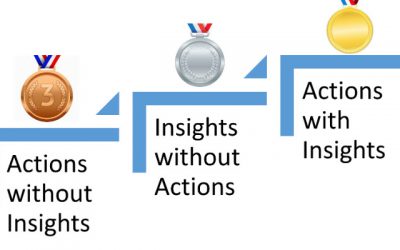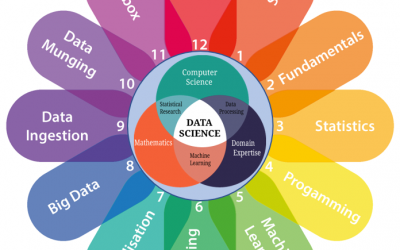Towards ‘Data Driven’ ‘Digital Transformation’ [Challenges and Considerations](Part-2)
In Part-1 of this article series on ‘Data Driven’ Digital Transformation, we have seen that ‘changing customer experience’ is the central driver for embarking on the journey. In this part, we will see some of the challenges and considerations for a successful Digital Transformation in order to become fully Data Driven organization.
IT vs. Business Initiative
Most of the Digital Transformations fail if they are IT initiatives and do not have enough support and buy-in from Business. IT should only be an enabler facilitator and enabler for meeting ‘business’ imperatives. With all the changes in data management trends and advancement of technologies fueled by open standards and open source development, there is a natural temptation for IT leaders to adopt and try new technologies. However, digital transformation is a cultural and organization wide change. It can be successfully implemented when business sees tangible benefits quickly which can be translated to positive business outcomes. In summary, a Digital transformation as a business initiative fully supported by IT, is the recipe for success.
Incorrect as-is assessment of Data Assets
The Digital Transformation needs to be seen as a holistic initiative and the very first step should be a thorough assessment of the existing data assets within the organization. Many organizations do not spend enough time and diligence on as-is assessment before embarking on the journey. As a result, a lot of surprises are uncovered on the way which require a change in direction at various stages. A change becomes more and more expensive in proportion to the stages completed within the transformation journey. The as-is assessment needs to consider the end goal and utility for each of the data asset and system and define the place of the asset within the end-state picture.
Big-bang Approach
A Digital Transformation program initiated as a big bang approach has a higher change of deviation from the intended outcomes. The enterprises need to plan the end-state and have a clear vision but at the same time avoid temptation to consider big-bang approach in which the benefits are intended to be realized at the end. Instead, the Digital Transformation road-map should be split into tangible milestones and outcomes. The program should be governed and adjusted as per the qualitative outcomes from intermediate milestones. The concept and intended outcomes should be proven with a quick and small sized proof-of-concept (POC). A POC should be seen as a learning and realignment experience for the program and an opportunity for course correction.
POC to Production
Many enterprises start small with a POC. The POC is done with a minimal infrastructure and process governance for development, testing and deployment. When POC is successfully completed, the business starts to realize quick wins. As a result, there is a temptation to continue to use the POC solution for critical business processes. This model does not scale and becomes a roadblock for the overall Digital Transformation journey. Once the POC is completed, a detailed foundation for the Digital Transformation should be setup which primarily includes various governance and checkpoint processes.
Automation
There are lots of repetitive processes within organizations which require human intervention. These processes are error prone as well as inefficient. Many of these processes can be fully digitized and automated (partially or fully). During the Digital Transformation foundation process, all the possible areas of automation should be identified along with all the data sources and assets required for automating these processes. Automation can potentially provide some immediate operational efficiencies and cost saving which earns business’ confidence in the program and ensures overall stakeholder commitment.
In summary, for a successful Digital Transformation journey, the organizations need:
- A holistic as well as a staged approach,
- Clarity of road-map,
- Stakeholder involvement at all levels to ensure Collaboration, Skills Upgrade, Organizational Culture refinement and empowerment,




